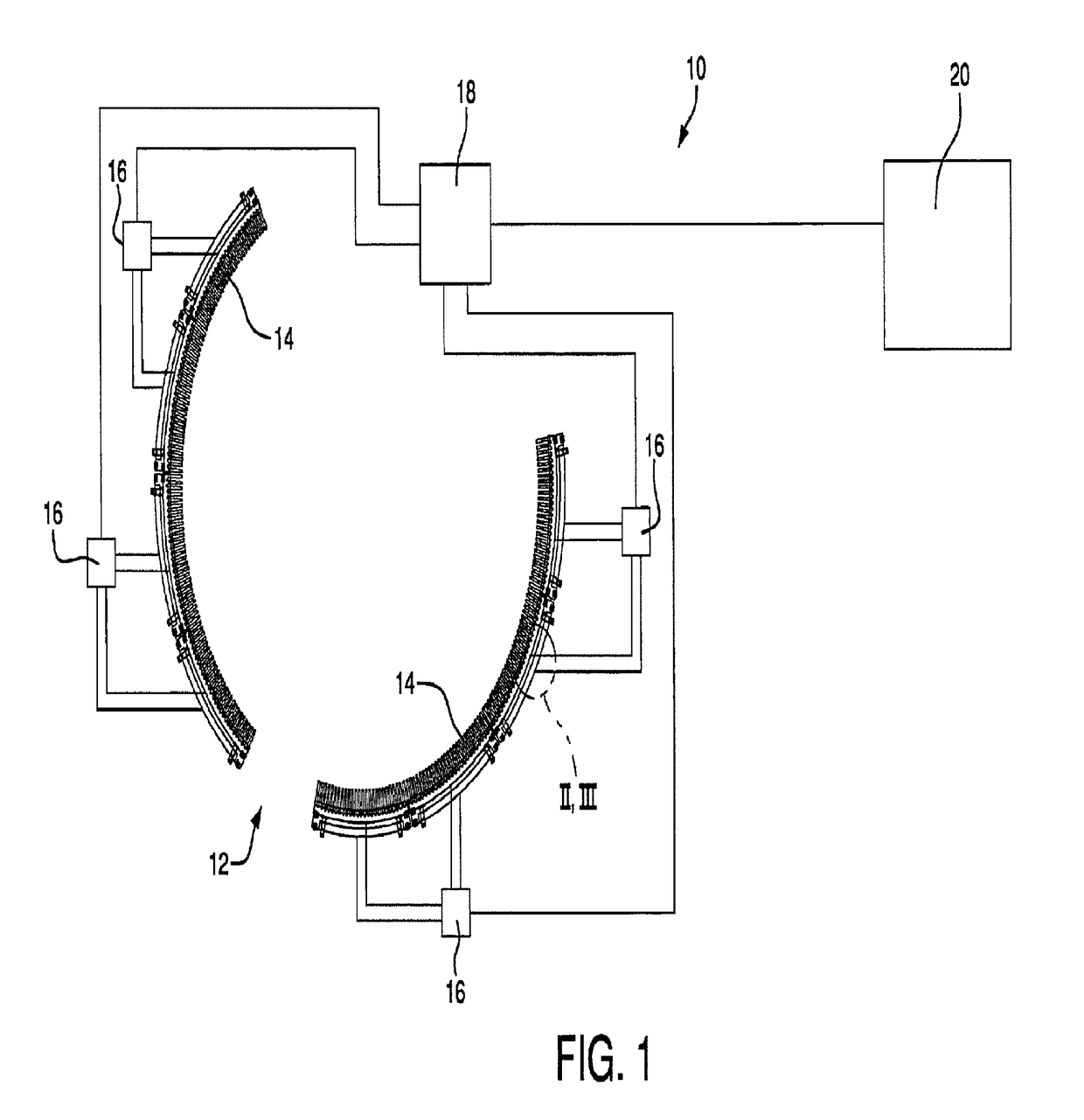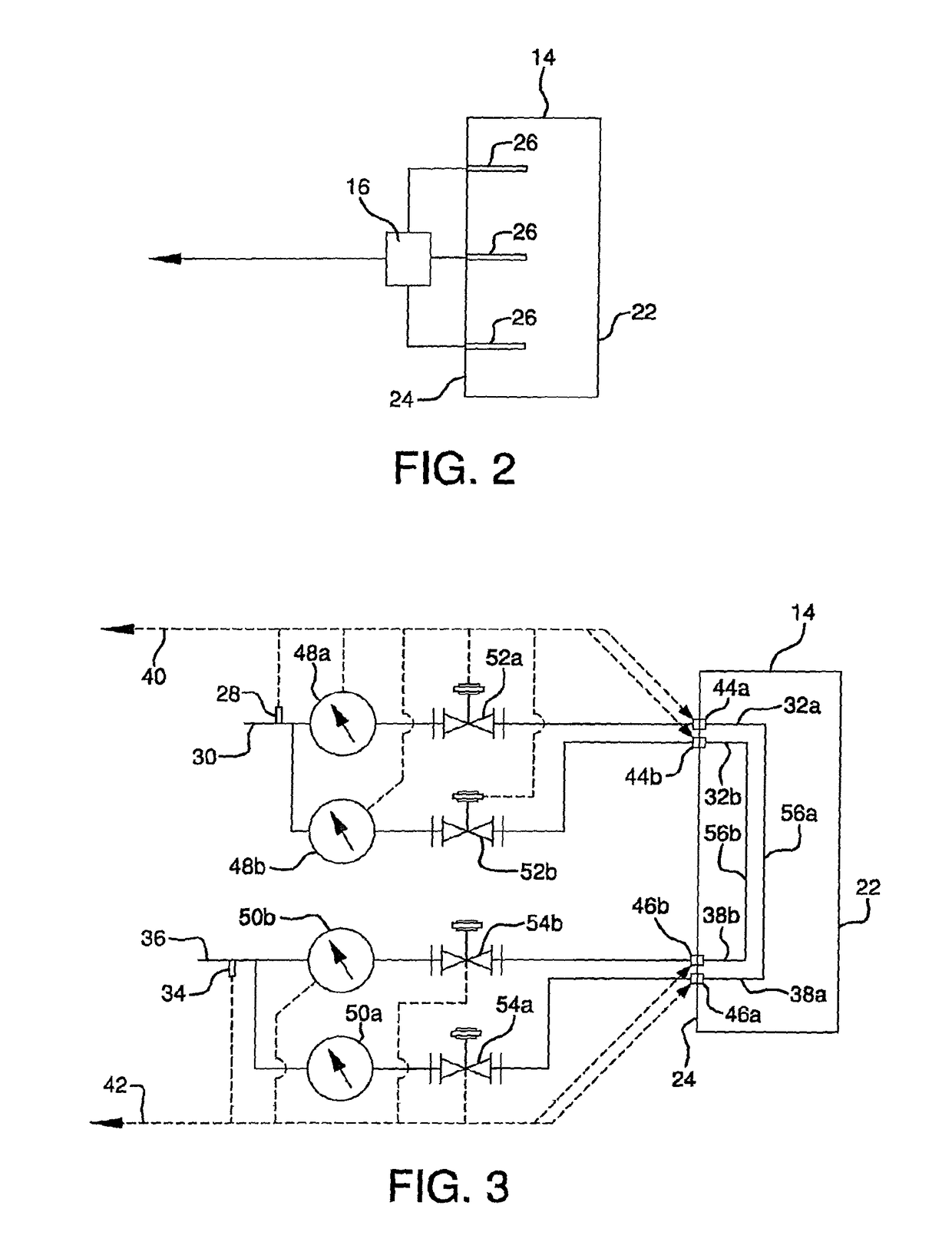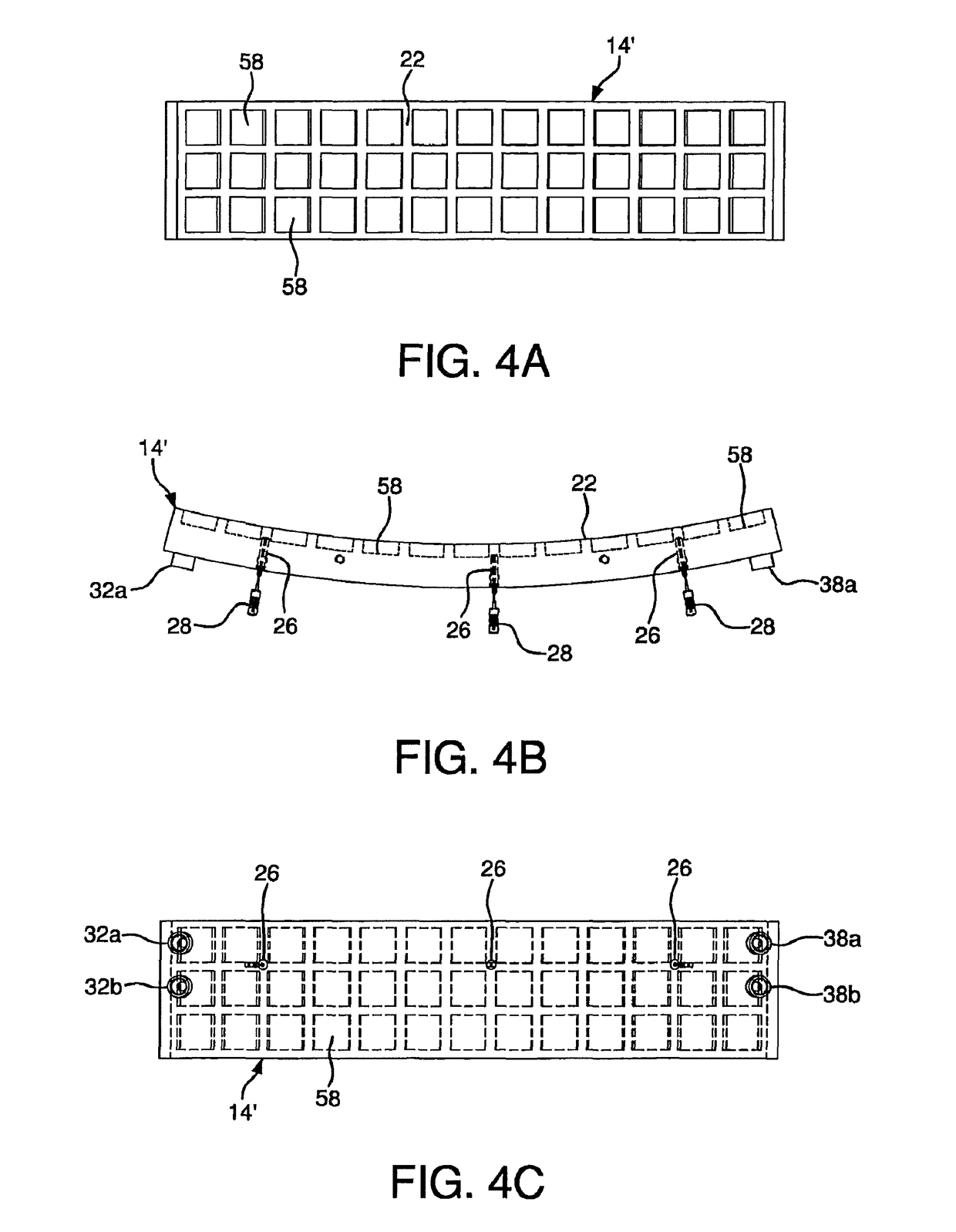Leak detection system for furnace cooling fluid circuits
a technology of leak detection and furnace fluid, which is applied in the field of leak detection system of furnace cooling fluid circuit, can solve the problems of large volume of cooling water entering the furnace, frequent leakage of fluid-cooled components, cumbersome procedures, etc., and achieve the effect of preventing damage to the cooling fluid circui
- Summary
- Abstract
- Description
- Claims
- Application Information
AI Technical Summary
Benefits of technology
Problems solved by technology
Method used
Image
Examples
Embodiment Construction
[0029]In the following detailed description, reference is made to the accompanying examples and figures that form a part hereof, and in which is shown by way of illustration specific embodiments in which the inventive subject matter may be practiced. These embodiments are described in sufficient detail to enable those skilled in the art to practice them, and it is to be understood that other embodiments may be utilized and that structural, logical, and electrical changes may be made without departing from the scope of the inventive subject matter. Such embodiments of the inventive subject matter may be referred to, individually and / or collectively, herein by the term “disclosure” merely for convenience and without intending to voluntarily limit the scope of this application to any single disclosure or inventive concept if more than one is in fact disclosed.
[0030]The following description is, therefore, not to be taken in a limited sense, and the scope of this disclosure is defined b...
PUM
 Login to View More
Login to View More Abstract
Description
Claims
Application Information
 Login to View More
Login to View More - R&D
- Intellectual Property
- Life Sciences
- Materials
- Tech Scout
- Unparalleled Data Quality
- Higher Quality Content
- 60% Fewer Hallucinations
Browse by: Latest US Patents, China's latest patents, Technical Efficacy Thesaurus, Application Domain, Technology Topic, Popular Technical Reports.
© 2025 PatSnap. All rights reserved.Legal|Privacy policy|Modern Slavery Act Transparency Statement|Sitemap|About US| Contact US: help@patsnap.com



